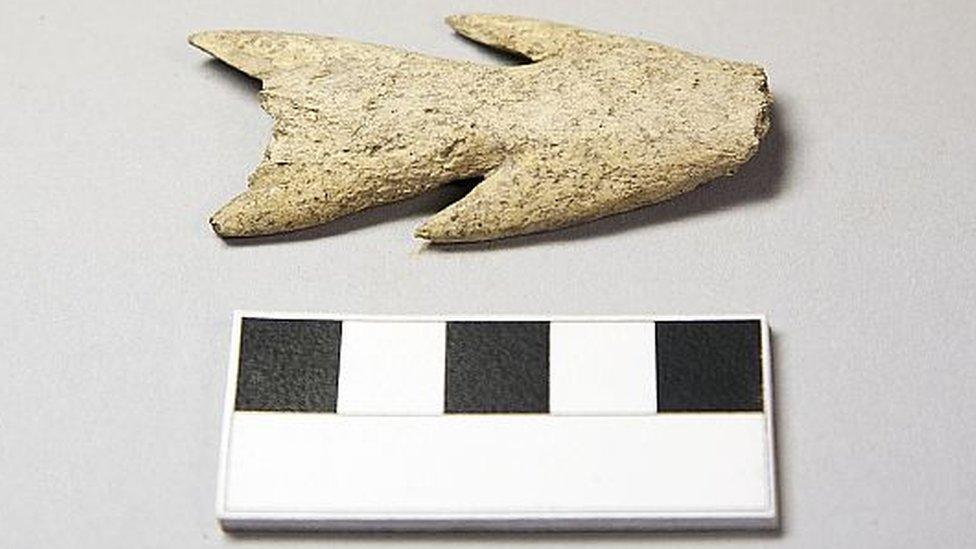Large '1,400-year-old cemetery' uncovered in Highlands
- Published
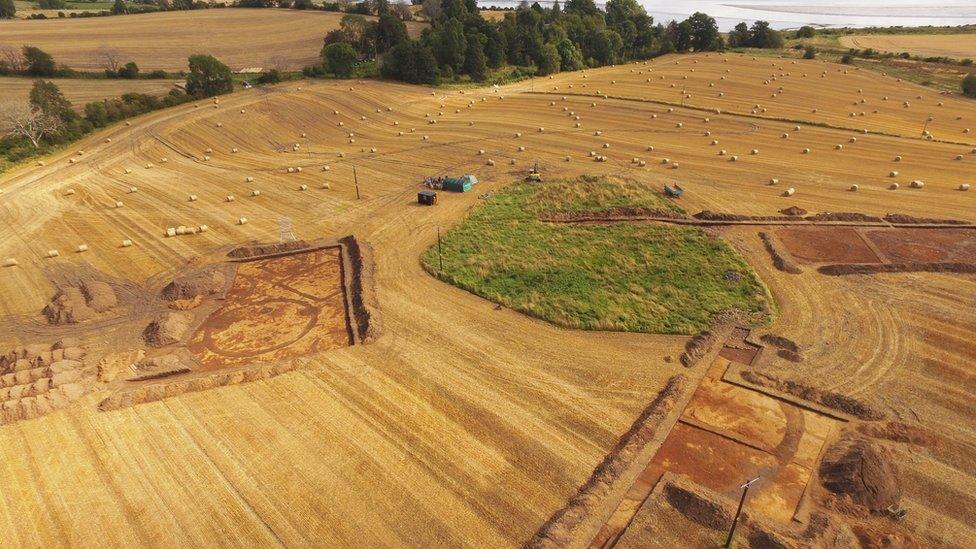
The possible Pictish cemetery is being excavated in a field in the Black Isle
What could turn out to be one of Scotland's largest Pictish burial grounds is being excavated on the Black Isle in the Highlands.
Archaeologists have confirmed the presence of a number of barrows, or burial mounds, near Muir of Ord.
Enclosures ranging in size from about 8m (26ft) to more than 40m (131ft) across have also been uncovered.
Archaeologists said the possible Pictish barrow cemetery could be about 1,400 years old.
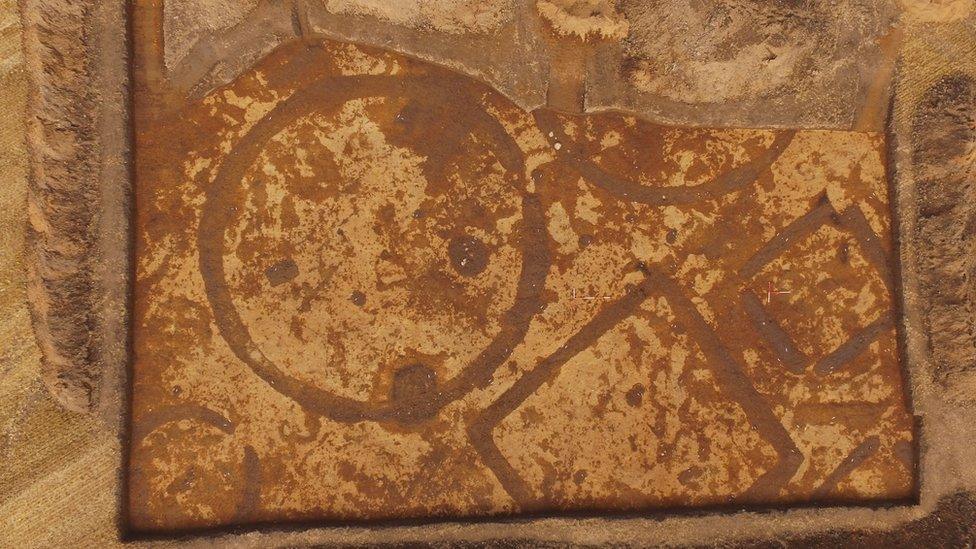
Enclosures of different sizes have also been found
They have also found features on the site that could date much further back into the prehistoric period.
Tarradale Through Time, a project of the North of Scotland Archaeological Society, is excavating the site.
The project has previously found a harpoon or spear along with axes made by hunter-gatherers in the Highlands 6,000 years ago.
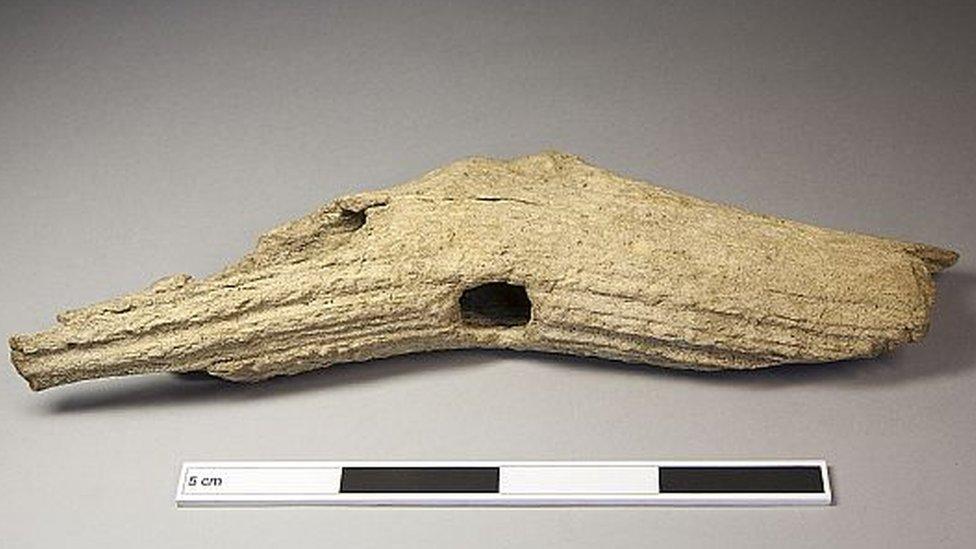
One of the axes made from deer antler previously found by the archaeology project
The tools made from red deer antlers were uncovered at a Mesolithic site near Muir of Ord.
The harpoon may have been used in hunts of seals and wildfowl on the mudflats of what is today the Beauly Firth.
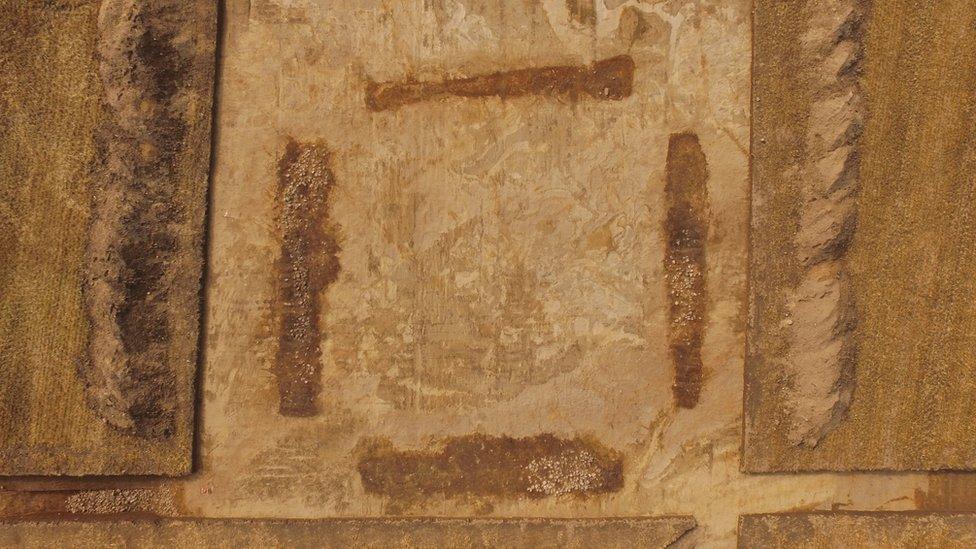
Archaeologists believe they have uncovered a barrow cemetery
Steven Birch, the cemetery site director, said the latest excavation came "hot on the heels" of the discovery of a previously unrecorded Pictish stone about six miles (10km) away in Dingwall.
He said: "We are looking at a large potentially Pictish barrow cemetery, where there also appears to be some earlier prehistoric activity.
"It is a very important site with a number of square and round barrows, as well as larger enclosures.
"We intend to evaluate the preservation and phasing of these features, obtaining radiocarbon dates from charcoal and bone samples to tell the story of site over time."
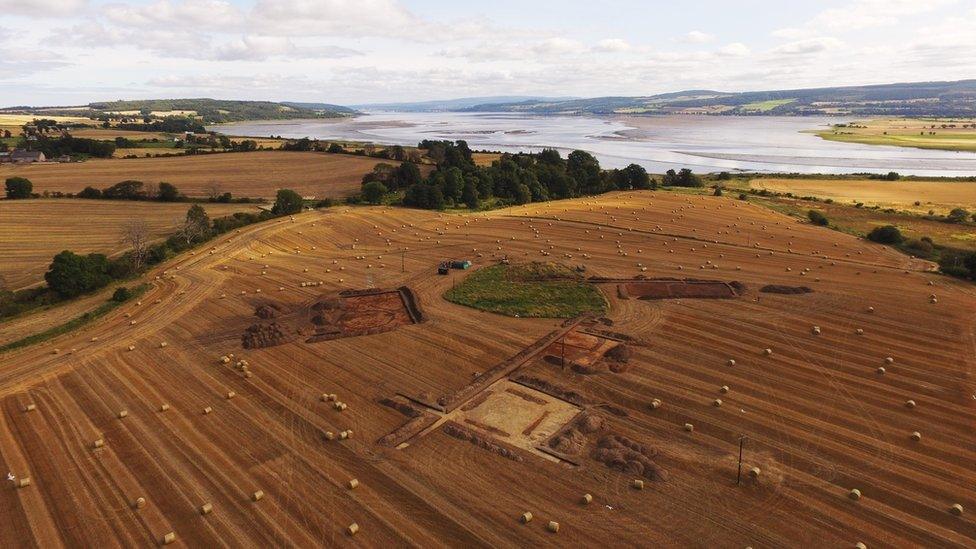
Further tests are to be done to confirm the age of the site
- Published23 August 2019
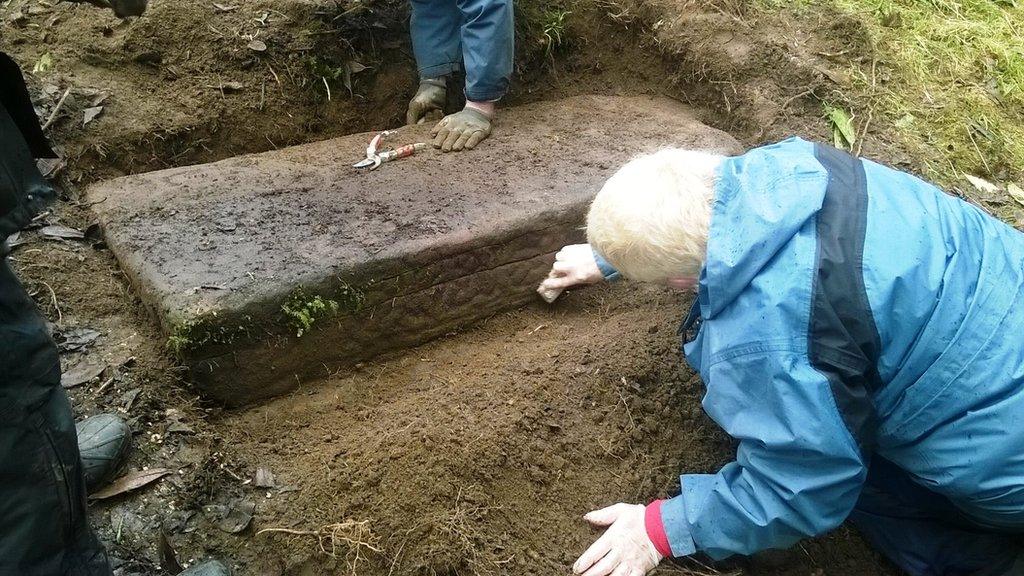
- Published24 October 2018
